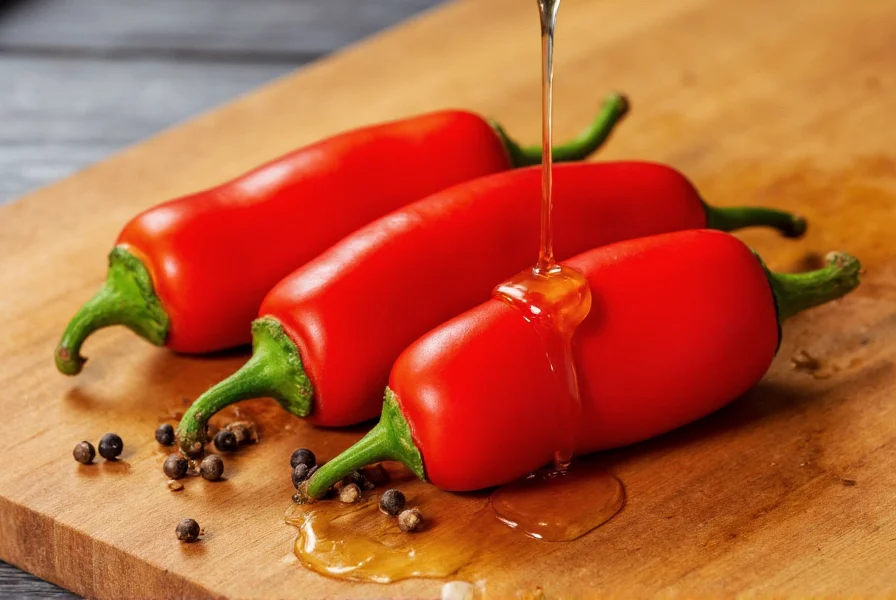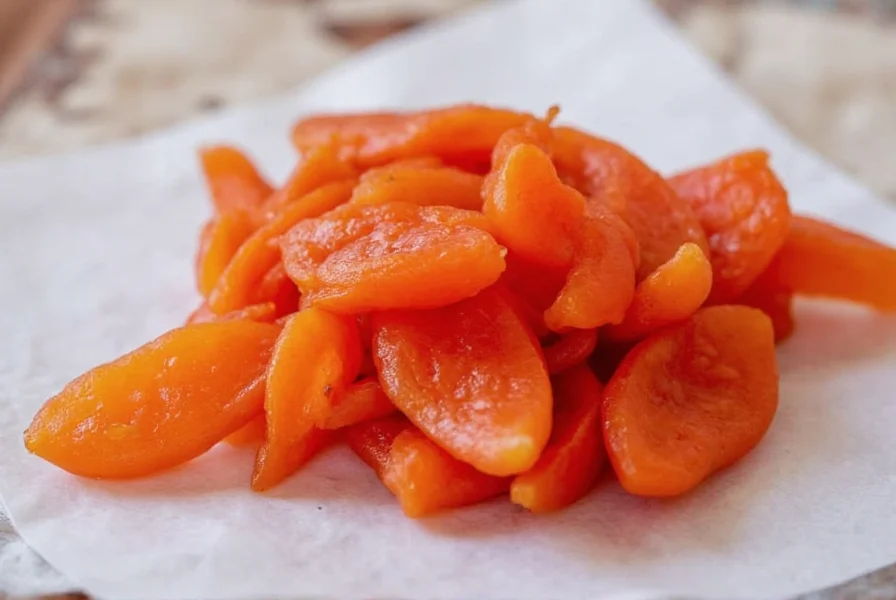Understanding this dynamic flavor trio requires examining each component's role in creating culinary harmony. Honey pepper pimento isn't just a random combination—it's a carefully balanced profile that has become a staple in Southern cooking and modern fusion cuisine. The magic happens when these three elements interact, creating something greater than the sum of its parts.
Flavor Chemistry Behind Honey Pepper Pimento
The science of this combination lies in how each element counteracts and enhances the others. Honey's natural sugars (primarily fructose and glucose) provide a rounded sweetness that mellow the pimento pepper's capsaicinoids—the compounds responsible for heat. Unlike jalapeños or habaneros, pimentos register just 100-500 Scoville units, making them ideal for subtle heat that honey can easily balance.
Black pepper contributes piperine, which creates a different type of heat—sharp and immediate rather than lingering. This compound activates different receptors than capsaicin, creating a layered heat experience. When combined properly, the honey's viscosity also helps distribute both heat elements evenly across the palate.

Traditional Applications and Modern Twists
This flavor profile shines in several classic preparations:
| Application | Traditional Ratio | Best Pairings |
|---|---|---|
| Cheese spread | 8:1:0.5 (cream cheese:honey:pepper) | Crackers, celery sticks, sandwiches |
| Meat glaze | 4:2:1 (honey:pimento:pepper) | Ham, chicken, pork tenderloin |
| Dipping sauce | 3:2:0.75 (mayo:honey:pimento/pepper) | Fried foods, roasted vegetables |
Modern chefs have expanded these applications to include honey pepper pimento aioli for gourmet burgers, infused syrups for cocktails, and even as a surprising addition to certain dessert glazes where the pepper's warmth complements sweet elements.
Perfecting Your Honey Pepper Pimento Ratio
Getting the balance right requires understanding your ingredients' variables:
- Honey type matters: Lighter honeys (like clover) provide subtle sweetness, while darker varieties (buckwheat) add molasses notes that can overpower delicate pimentos
- Pimento preparation: Fresh pimentos offer brighter flavor than jarred, but both work—just reduce liquid content by 25% when using jarred
- Pepper grind: Coarse grind provides intermittent heat bursts, while fine grind creates consistent warmth
Start with a base ratio of 4 parts honey to 1 part pimento (by volume) and 1/4 part freshly ground black pepper. Taste and adjust—remember that flavors meld and intensify over 24 hours as the mixture rests.
Creating the Ultimate Honey Pepper Pimento Cheese Spread
This crowd-pleasing recipe demonstrates the perfect balance:
- Combine 8 oz softened cream cheese with 2 tbsp honey in mixing bowl
- Fold in 1/4 cup finely diced pimentos (well-drained if jarred)
- Add 1/2 tsp freshly cracked black pepper
- Mix until just combined—overmixing makes spread gummy
- Chill minimum 4 hours before serving to allow flavors to meld
- Garnish with additional cracked pepper and honey drizzle
For a sophisticated variation, substitute 2 oz of cream cheese with goat cheese and add 1 tsp lemon zest. The acidity brightens the honey pepper pimento flavor profile without disrupting the core balance.

Common Mistakes to Avoid
Even experienced cooks make these honey pepper pimento errors:
- Using pre-ground pepper: Loses volatile compounds that create nuanced heat—always use freshly cracked
- Over-processing pimentos: Creates bitter notes—dice by hand rather than food processing
- Adding honey to hot mixtures: Degrades beneficial enzymes and alters flavor chemistry—always incorporate at room temperature
- Ignoring resting time: Flavors need 4+ hours to properly meld—don't serve immediately
Storage and Shelf Life Considerations
Proper storage maintains the delicate honey pepper pimento balance:
- Refrigerate in airtight container for up to 7 days
- Freezing alters honey's crystalline structure—not recommended
- Surface discoloration indicates pimento separation—stir gently to recombine
- Always use clean utensils to prevent bacterial growth in honey-based mixtures
When preparing larger batches of honey pepper pimento glaze or spread, consider making the base components separately and combining them just before use for maximum freshness.
Expanding Your Flavor Horizons
Once comfortable with the classic honey pepper pimento combination, experiment with these professional enhancements:
- Add 1/4 tsp smoked paprika to deepen the pimento flavor
- Infuse honey with rosemary or thyme before incorporating
- Substitute 25% of honey with maple syrup for earthier sweetness
- Add a pinch of cayenne for layered heat complexity
Remember that the best honey pepper pimento creations respect the delicate balance between sweet, mild heat, and sharp pepper notes. Overcomplicating the formula often diminishes what makes this combination special.
Frequently Asked Questions
What's the difference between pimento and bell pepper in honey pepper pimento recipes?
Pimentos are a specific variety of sweet red pepper with thinner walls and more intense flavor than standard bell peppers. They register lower on the Scoville scale (100-500 units) compared to even mild bell peppers. Their higher sugar content and distinctive flavor make them ideal for honey pepper pimento combinations, though roasted red bell peppers can substitute in a pinch with slightly less complexity.
Can I use honey pepper pimento seasoning instead of fresh ingredients?
Yes, but with adjustments. Commercial honey pepper pimento seasoning typically contains 60-70% sugar to preserve shelf life, so reduce added sweeteners by half. Check the ingredient list for anti-caking agents that may affect texture. For every 1 tablespoon seasoning blend, substitute with 2 tsp honey, 1.5 tsp diced pimentos, and 1/4 tsp freshly cracked pepper for more authentic flavor.
Why does my honey pepper pimento spread separate after refrigeration?
Separation occurs because honey's hygroscopic nature draws moisture from other ingredients over time. To prevent this, ensure all components are at room temperature before mixing, use cream cheese with at least 33% milkfat, and incorporate 1 tsp cornstarch dissolved in 1 tsp water during preparation. If separation happens, gently fold the mixture with a spatula—avoid vigorous stirring which incorporates air and worsens texture.
What's the ideal honey variety for honey pepper pimento recipes?
Lighter honeys like orange blossom or tupelo provide clean sweetness that doesn't overpower the pimento flavor. Avoid strongly flavored honeys like buckwheat or manuka which dominate the delicate balance. For cheese spreads, wildflower honey offers pleasant floral notes, while clover honey works best for meat glazes where you want pure sweetness without competing flavors. Always use raw, unfiltered honey for optimal flavor complexity.











 浙公网安备
33010002000092号
浙公网安备
33010002000092号 浙B2-20120091-4
浙B2-20120091-4